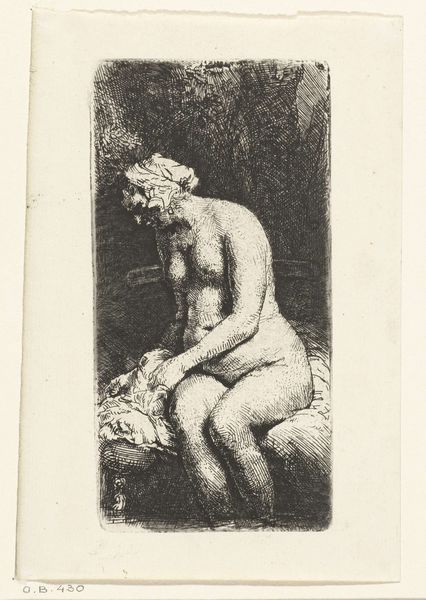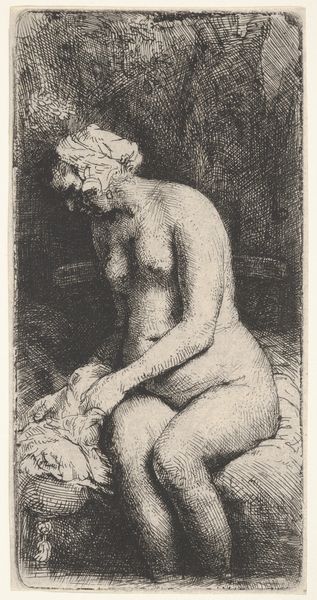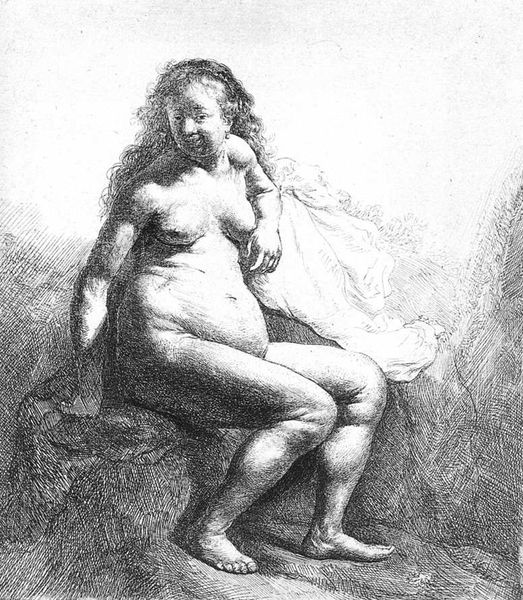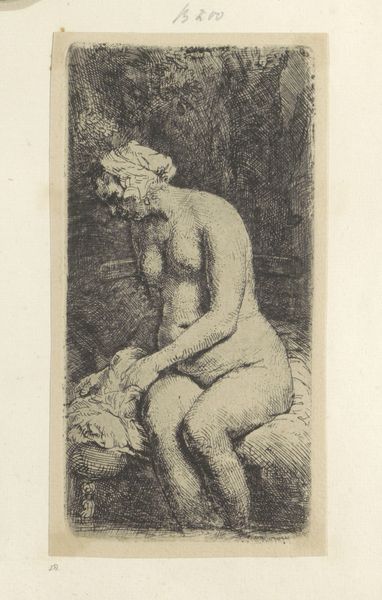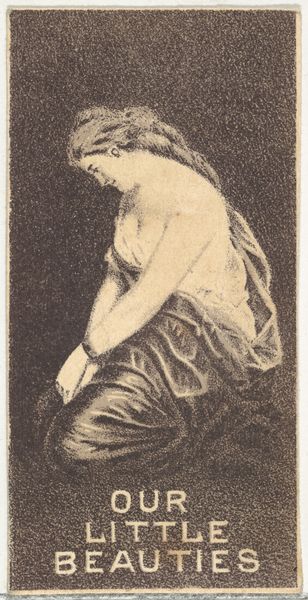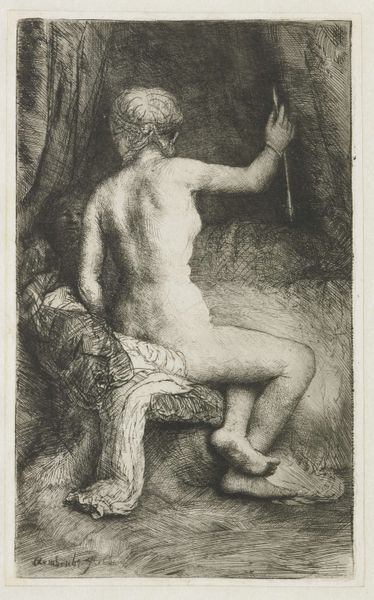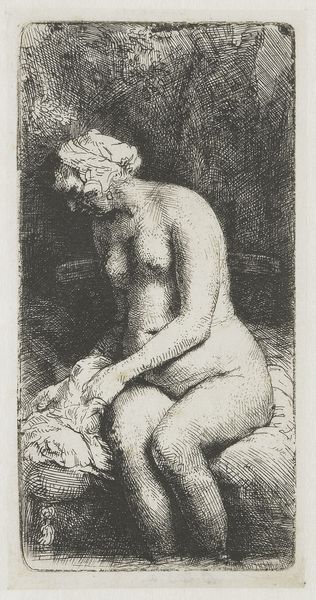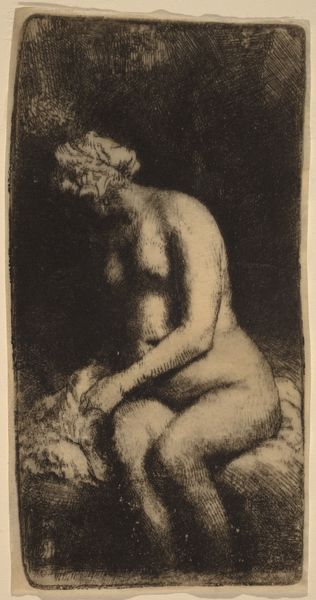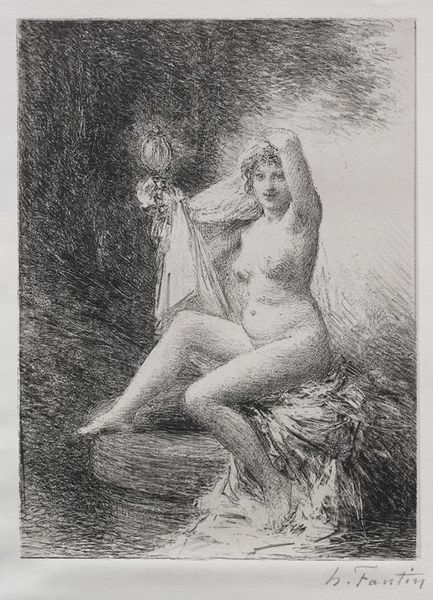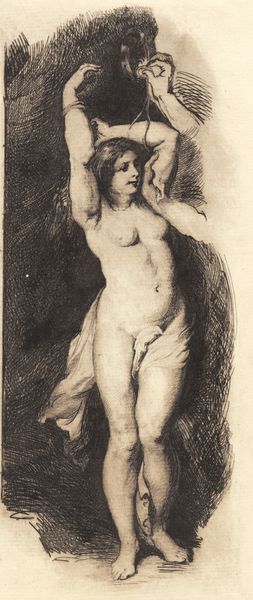
drawing, ink
#
drawing
#
baroque
#
charcoal drawing
#
figuration
#
ink
#
pencil drawing
#
genre-painting
#
nude
Copyright: Public Domain: Artvee
This is Rembrandt van Rijn's etching, Woman Bathing her Feet at a Brook. In 17th-century Netherlands, the public role of art was often tied to moralizing narratives and representations of daily life. This intimate portrayal diverges from idealized nudes common in academic art, presenting a more human, less theatrical scene. Rembrandt's choice of subject, a woman in a private act, challenges the traditional boundaries of acceptable public imagery. The image creates meaning through its stark realism. Rembrandt’s use of light and shadow, known as chiaroscuro, emphasizes the woman's vulnerability and brings a psychological depth to the scene. By grounding his art in the everyday, Rembrandt subtly critiques the art institutions of his time and promotes a more accessible and relatable form of art. To fully appreciate the social context, one could delve into the historical debates about morality, public image, and artistic freedom. This artwork reminds us that art's meaning is constantly reshaped by the world around it.
Comments
No comments
Be the first to comment and join the conversation on the ultimate creative platform.
